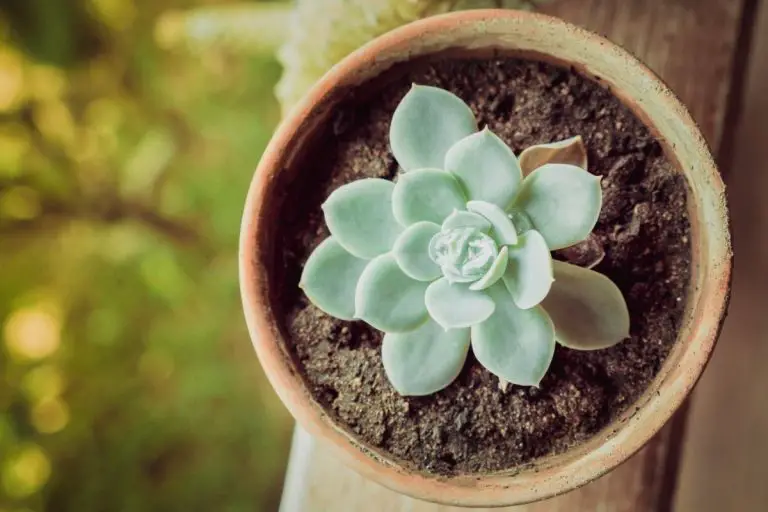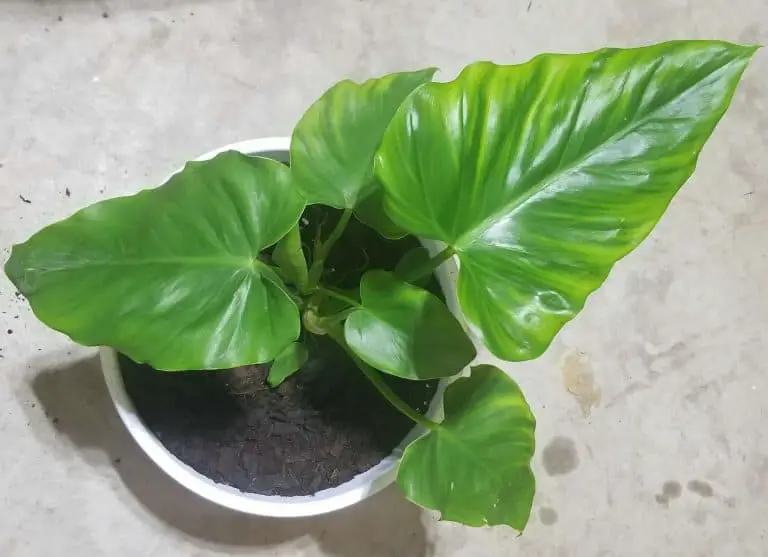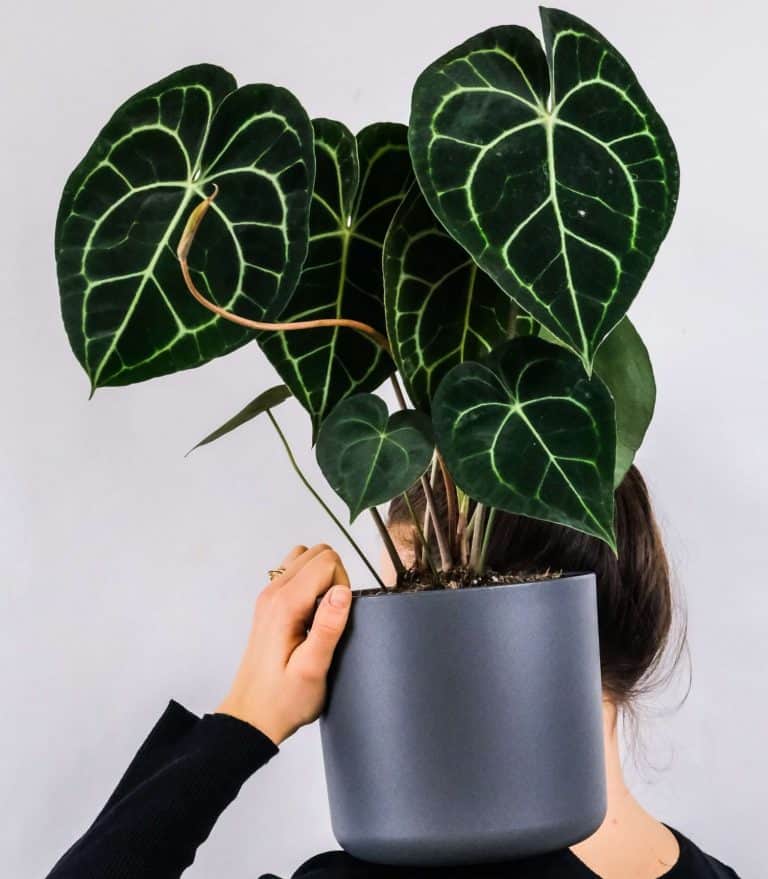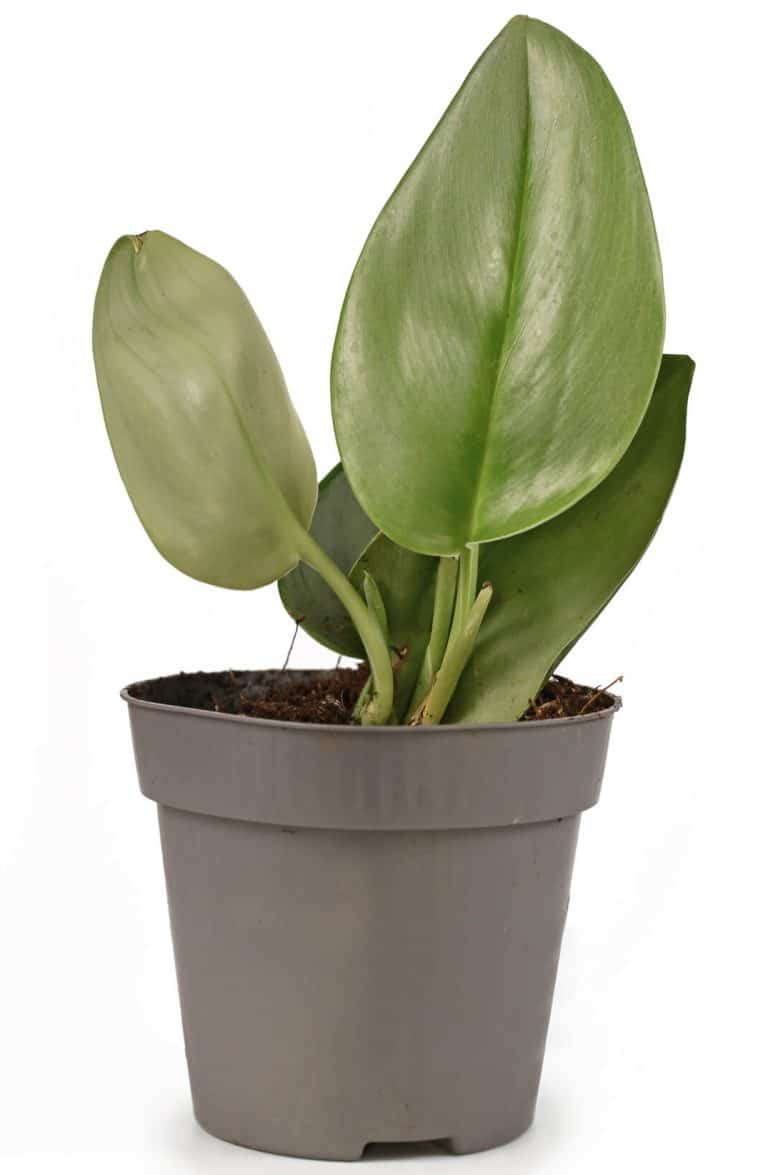Scindapsus Treubii Moonlight: A Plant Lovers Care Guide
What Is Scindapsus Treubii Moonlight?
The Scindapsus Treubii Moonlight is a beautiful, hardy, and low-maintenance plant that can be aesthetically pleasing to any individual looking for a living piece of art as indoor decor.
Being sold under tradenames such as Scindapsus Treubii Silver or Sterling Silver, it’s easily identified by its dark to milky green leaves tainted with a silver shade on its surface and dark green midvein running along its centre.
The Moonlight Treubii grows naturally and thrives in the dense rainforest under the humid canopy of the tropics.
Mainly native to parts of SouthEast Asia, specifically Peninsular Malaysia, Borneo, and Java. It has also made appearances in the Solomon Islands, Pacific Islands, as well Queensland, and New Guinea.
As the Scindapsus genus is a climbing variety of plants, they can easily adapt to their environment by taking on new ways of growing in search of light.
According to NASA research, Scindapsus plants have been placed in the top ten houseplants for purifying air by absorbing harmful air particles
Unlike its brothering counterpart, the Scindapsus Treubii Dark Form is a rare and expensive variety, which makes the Treubii Moonlight still a challenge to get hold of but a much easier find.
DISCLOSURE
Some of the links on here are affiliate links and I may earn if you click on them, AT NO EXTRA cost to you. Hope you find the information here useful! Thanks.
Related Articles:
- Philodendron Hastatum: The Beginners Care Guide
- Anthurium Clarinervium: The Most Effective Care Guide
- Philodendron Florida Ghost – The Most Comprehensive Guide
- The Best Practices to Care for Philodendron Birkin
- Snow Queen Pothos – Easy to Follow, Grow Care Guide
- Scindapsus Treubii Dark Form – Care Tips
Scindapsus Treubii Moonlight Plant Features
Classification
The Treubii Moonlight is part of the Araceae family, also known as the Arum/Aroid family. Their subfamily is Monsteroideae, the genus is Scindapsus, and the species Treubii Moonlight.
Foliage
Relatively thick and matte-like leaves, shaped like an oval heart lance. Leaves are green with a slight tint of a silver hue and a dark green midvein running along its centre.
Fully grown and mature leaves can size up anywhere between 12 to 60 cm
Growth
Naturally occurring in nature, this climbing vine variety is made to grow up trees and climb rocks
Has an exceptional ability to grow quickly in minimal light conditions, making them an ideal indoor house plant that requires minimal attention.
Length/Height
These plants are natural crawlers and climbers, scaling surfaces at any angle, taking on horizontally or vertically just feels like home.
If given optimal growing conditions, they can easily reach anywhere between 6 to 8 feet or more.
Resistance of Scindapsus Treubii Moonlight
As it is quite a sturdy and hard plant to kill off, these perennials have strong immunity against fungus and pest attacks.
Toxicity
Apart from having what could look like a rabies dog hanging around your inner confines.
If consumed can cause oral irritation, intense burning and irritation of the mouth, tongue, and lips, excessive drooling, vomiting, and difficulty swallowing.
This is definitely not a plant you would want to have around pets and children.
How to Care for Your Scindapsus Treubii Moonlight?

Caring for this plant is like caring for a patch of grass. It requires low maintenance and will grow in abundance if given the right conditions.
Following the Treubii Moonlight care tips will ensure your plants’ success and optimal growth:
Light
The key main ingredient for the process of photosynthesis. Some plants just don’t like too much of it. And this plant happens to be one of them.
In order to mimic the shady environment of the canopy, avoid bright and direct sunlight as the sun’s heat may scorch the leaves.
As a Scindapsus Treubii Moonlight care tip, you can either place it under a mesh netting or in a room with lots of filtered light i.e. window blinds.

Temperature
The ideal temperature range for this plant is between 18C to 23C (65 – 75 F).
As it is quite a sturdy and hardy plant, it adapts well to various climates. It only shows weakness when temperatures begin to fall below zero.
It is recommended to keep in a warmer place when temperatures vary between 10 – 12 C and avoid keeping your plant near an air conditioning vent or in hot temperatures for long periods of time.
Use a hydro temperature meter to make sure your plant is having optimal growing conditions.

Humidity
Since the plant originates from the tropics, it thrives in a humid climate.
Maintaining mid to high humidity (high humidity recommended), will help make your plant feel just at home and happy. The ideal humidity is around 60% but can also grow in humidity levels as low as 40%.
You may want to consider getting a humidifier if you feel some dryness in the air and a not-so-happy plant.

Watering
Now, you don’t want to overwater your plant nor do you want to keep it bone dry.
Maintain an equilibrium whilst you ensure proper drainage, it is a recommendation but not an obligation to water your plant with distilled or rainwater, and water until you feel the soil is moist and not soggy.
Placing your finger in the top 2 inches of the soil can provide an indication as to whether your plant needs watering or not.
Any dryness further than 2 inches would require immediate watering.
If you’re not having the time to water, plug in self-watering spikes to make sure your plant is having consistent water.

Soil
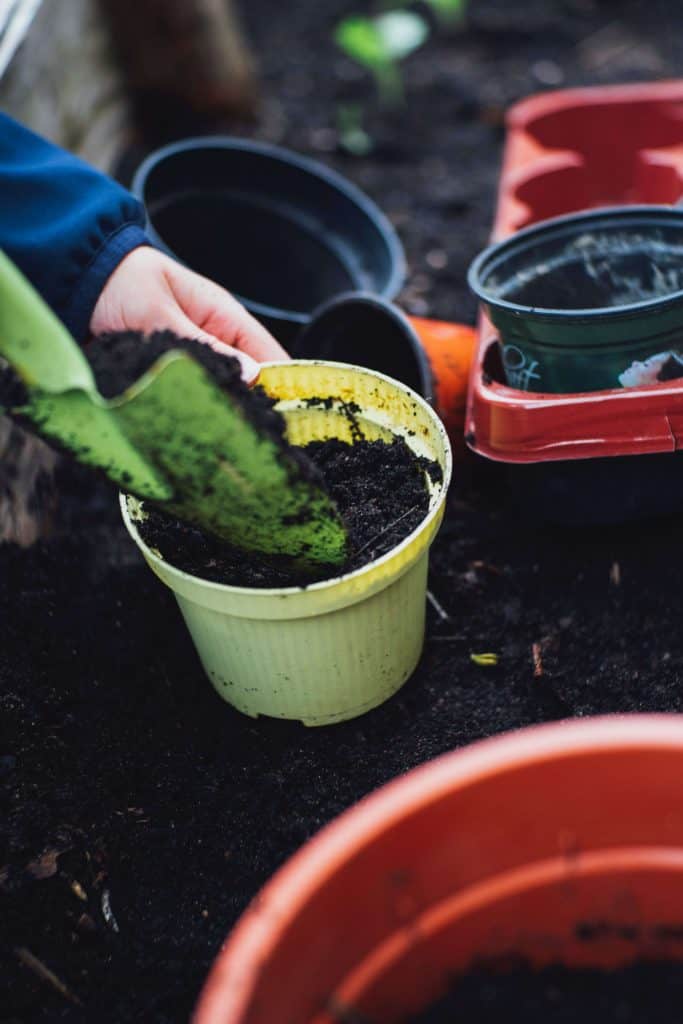
To ensure healthy leaves means to ensure healthy roots.
Think of it this way, if someone tucked you in bed with down feathers and fed you a full course meal every day. Do you think you’d grow to what you call “a healthy size”?
A well-drained aroid soil is your utmost priority.
Common Mixture
- 2 parts premium / peat-based potting mix soil
- 3 parts perlites.
Healthy Mixture
Along with the Common Mixture, you can add
- 4 parts orchid bark
- 1 part activated horticultural charcoal
- 1 part earthworm castings (An organic form of fertilizer made from worm poop).
If that doesn’t seem to work for you, consider purchasing a ready-made organic mix.

Fertilizer for Scindapsus Treubii Moonlight
During the growing months in Spring and Autumn, you can add once a month 1-part of earthworm castings or with a 2 – 1 – 1 organic fertilizer
You can test the acidity or alkalinity of your soil with this 3 in 1 pH, sunlight and moisture test kit.

Pot
You want to select pots with good drainage holes, ultimately the wider the better.
If you’re a person that won’t place much thought into what pot to use, you might want to give this a little bit of consideration.
Using a plastic pot will increase the chance of root rot as the material would not be as breathable as if you would use terracotta that is porous.

Repotting Scindapsus Treubii Moonlight
Before you start repotting your Treubii Moonlights, know that it is a slow-growing plant.
Once every few years is an ideal time frame depending on how optimal the growing conditions are.
I would recommend you to start repotting when you feel 2 – 3 or more of the same plants in one pot are starting to overcrowd and exceed in size.
By simply taking the plant out of its original pot along with the soil, begin to separate each plant, taking great care not to damage the main roots of each plant.
Once separated, place all your Treubii’s in the sink and give it a good rinse. Prepare each pot with a healthy soil mixture and you’re ready to begin repotting.
How Do You Propagate Scindapsus Treubii Moonlight?
The art of making plant babies is not only fun to do, it gives you the opportunity to share your propagated Treubii plant with your friends and family.
Plant propagation is the process by which new plants grow from seeds, cuttings, or other plant parts.
There are a number of ways you can propagate your Scindapsus Treubii plant by using either stem cuttings or parts of your Treubii plant.
When and How
Ideally, the best time to start to propagate your plant is on warm days from the beginning of spring to mid-summer.
The aim is for you to have your cuttings with nodes as that is where roots will begin to develop.
Water Propagation Method
This is by far the easiest, and will take no more than 5 minutes! (If you’re a beginner, take your time).
1. With a sharp knife or some gardening shears, cut off a stem with its leaf 3 – 4 inches from below its node.
2. Place your cutting in a glass of water
3. Wait 3 – 4 weeks and your cutting will start to develop roots. (Make sure you change the water once a week to reintroduce oxygen to your cuttings)
4. Once roots are fully formed and 2 – 3 inches long, transplant your cutting into the soil.
You can place your cuttings in propagating tubes serving two purposes, plant propagation and aesthetically pleasing

Moss and Perlite Mix Propagation Method
1. With a sharp knife or some gardening shears, cut off a stem with its leaf 3 – 4 inches from below its node.
2. In a small glass or plastic container (preferably transparent so can see if roots develop or not), fill it with Sphagnum Moss Perlite Mix and add water until thoroughly moist
3. Place the cutting into the container and wait 3 – 4 weeks for roots to develop.
4. Transplant your cutting into the soil when roots are 2 – 3 inches long.
Soil Propagation Method
1. With a sharp knife or some gardening shears, cut off a long stem with its leaf 5 – 7 inches from below its node.
2. You can make multiple cuttings to increase your chances of success, make sure there is at least one node on the stem cutting.
3. In a small pot, add a half mixture of each potting mix and peat-based potting mix, and water it thoroughly.
4. 3 inches from the bottom of your cutting, remove the leaves from the lower nodes that will be planted inside the pot. Depending on the size of the pot, you can place multiple cuttings, just try not to overcrowd.
5. Moisten the soil and cover your cuttings in a transparent polythene bag or growing box to keep a humid environment.
6. Place in a warm place and out of direct sunlight, and make sure you aerate once a week to avoid microbial growth.
7. After 3 – 4 weeks, remove the cover and your plants should have developed new roots. At this stage, you can more or less place it where you want.
8. When watering, make sure you leave the upper layer dry between consecutive watering as you have an increased chance of developing root rot if overwatered.
9. After about 3 months, you can transplant each cutting into its own individual pot.
Common Problems with Scindapsus Treubii Moonlight
Whether we like it or not, we have to anticipate problems. Consider your plant to be a pet without a leash and a poop bag.
You can save yourself the headache when it comes to plants sickness and diseases
Assuming you’re not an expert on this matter, you can’t completely prevent problems. But what you can do is to take the right steps to minimize these problems
Make sure you get your plants and cuttings from reputable sources that handle their plants properly and in a sanitized environment.
Despite all that, every plant owner will tell you, you’re bound to encounter some problems one way or another if proper basic plant care isn’t adhered to.
Scorched or Burnt Leaf Ends
There could be numerous and more complex reasons as to why your leaf ends are looking burnt. The most common reason is the mistake of placing your plants in direct sunlight.
These plants thrive under the canopy of the jungle, and any direct light and heat can be too intense for the leaves and would cause them to have a bad sunburn. Do them a favour and spare your Moonlight Scindapsus epidermis.
Yellowing Of the Leaves
– The most common alibi is due to improper water drainage. The Scindapsus Moonlight Treubii loves well-drained soil and any water retention within its roots calls out with a yellow traffic signal ATTENTION!
Remedy this by first checking your drainage holes and soil texture.
Check that the drainage holes below the pot aren’t completely blocked and the soil isn’t too compact like clay and loose like sand but just the right composition of the healthy mixture. See Soil.
– Another reason may be due to the plant not getting enough moisture from the air. Misting your plant with water to keep it moist and to prevent mineral deposits on its leaves.
– If all is fine, you might want to chill out on your watering schedule and always check if the first 2 inches of your topsoil are dry before watering.
Drooping or Wilting of Scindapsus Treubii Moonlight Leaves
There could be a few factors that may cause your plant leaves to droop or wilt. Here are a few:
– Despite it coming from the rainforests of Asia, you would’ve thought it would only like warm weather. Hot temperatures above 28C for long periods of time can cause your plant to wilt and droop.
Frequent ventilation and aeration are key to keeping your plants cool and happy
– This may be the most obvious but it’s worth a mention. Has your plant recently received food and water? Just like you would turn limp when dehydrated and hungry, so will your plant.
Is the room having adequate indirect sunlight? Not enough light means your plant isn’t having enough light meals and make sure to water your plant as regularly needed.
– Another solution is you can check if your plant has outgrown its container. If roots seem to be bursting out in search of extra space, you might want to consider re-potting into a larger vase or pot.
Common and Some Rare Scindapsus Varieties.
Similar varieties
Even with the name, the Scindapsus Pictus Trebie can be mistaken for Scindapsus Pictus Treubii, it’s very easy to get mixed up with look-alike varieties. Especially if you’re a plant enthusiast newbie.
There have been numerous cases where vendors falsely advertise, all in the name of monetizing on the influx of high demand and low supply. You think you got the plant you want where in reality you’ve just been fooled.
Having an idea of what similarities are out there can help save you in the long run.
Listed below are the top 5 look-alikes:
1. Scindapsus Pictus Silvery Ann (Satin Pothos)
But I also have to make it clear, there are also vendors out there that will go about naming the Scindapsus Treubii Moonlights under various names.
Its closest relative is Pothos (Epipremnum) and Philodendron, although it’s much less common, and it’s okay what they sell so long as they sell what they advertise. Pothos Treubii Moonlight, Pothos Moonlight, Scindapsus Pictus Treubii, and Epipremnum Treubii Moonlight.
Rare Variety
Scindapsus Treubii Dark Form also known as Treubii Black. Despite it having almost a similar name to the Scindapsus Treubii Moonlight, these two plants quite commonly get mistaken for one over the other.
The Treubii Black has dense, thick, and sturdy leaves that look black in colour but at a closer look appears a deep dark green tainted with a shiny surface.
They are considered to be a rare plant and you’ll be lucky enough to find your local plant nursery selling these gems.
Despite all that, that shouldn’t stop you from scouring online looking for independent vendors.
Where Can You Buy Scindapsus Treubii Moonlight?
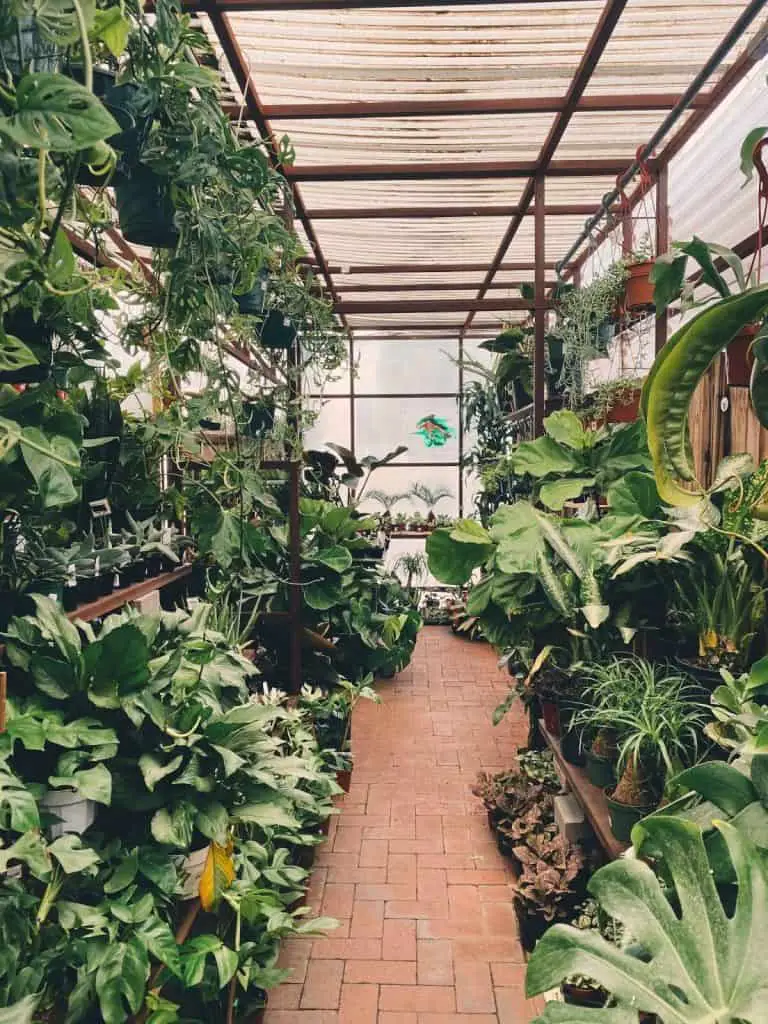
There are hundreds of sites offering Scindapsus treubii moonlight for sale but I deeply encourage you to buy locally and in person. Checking out your local floral/garden store can be your first step.
There aren’t too many sites offering international shipping as the regulations and paperwork can get quite tedious, and the ones that do are listed below:
If that doesn’t work, you can check out independent vendors offering Treubii Moonlight for sale on Etsy, Amazon, eBay, and Facebook.
Keep in mind though, buying from independent vendors can go one way or another. Always check their authenticity, reviews, and reputation.
Ultimately, You Can’t Go Wrong With This Plant.
Despite its steep price and limited availability, the minimal care needed relative to what beauty the leaves has to offer is definitely worth the effort.
Whether you already own a Scindapsus Treubii Moonlight or contemplating on whether to get one.
This ultimate guide should serve as an aid and a reference to provide you with solutions to unanswered questions, ensuring your plants’ success whilst making your plant selection process a whole lot easier.

